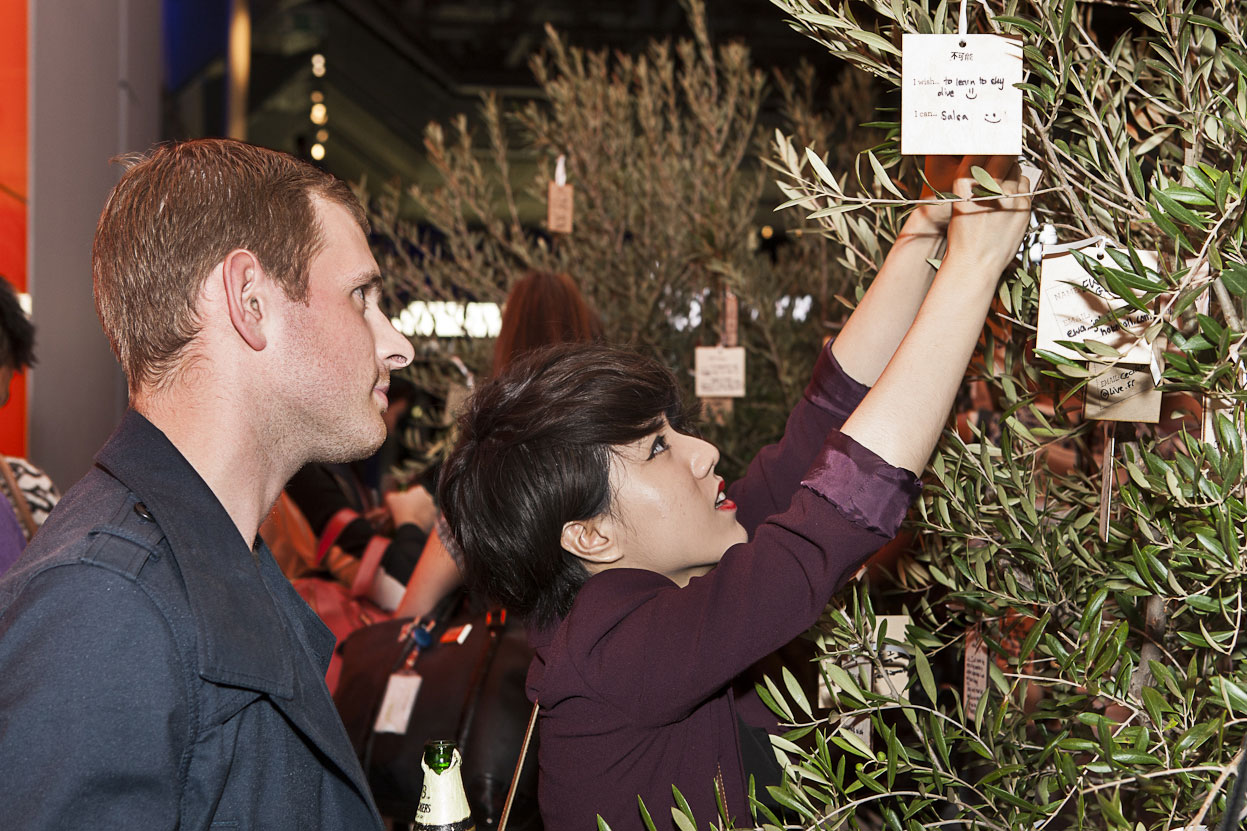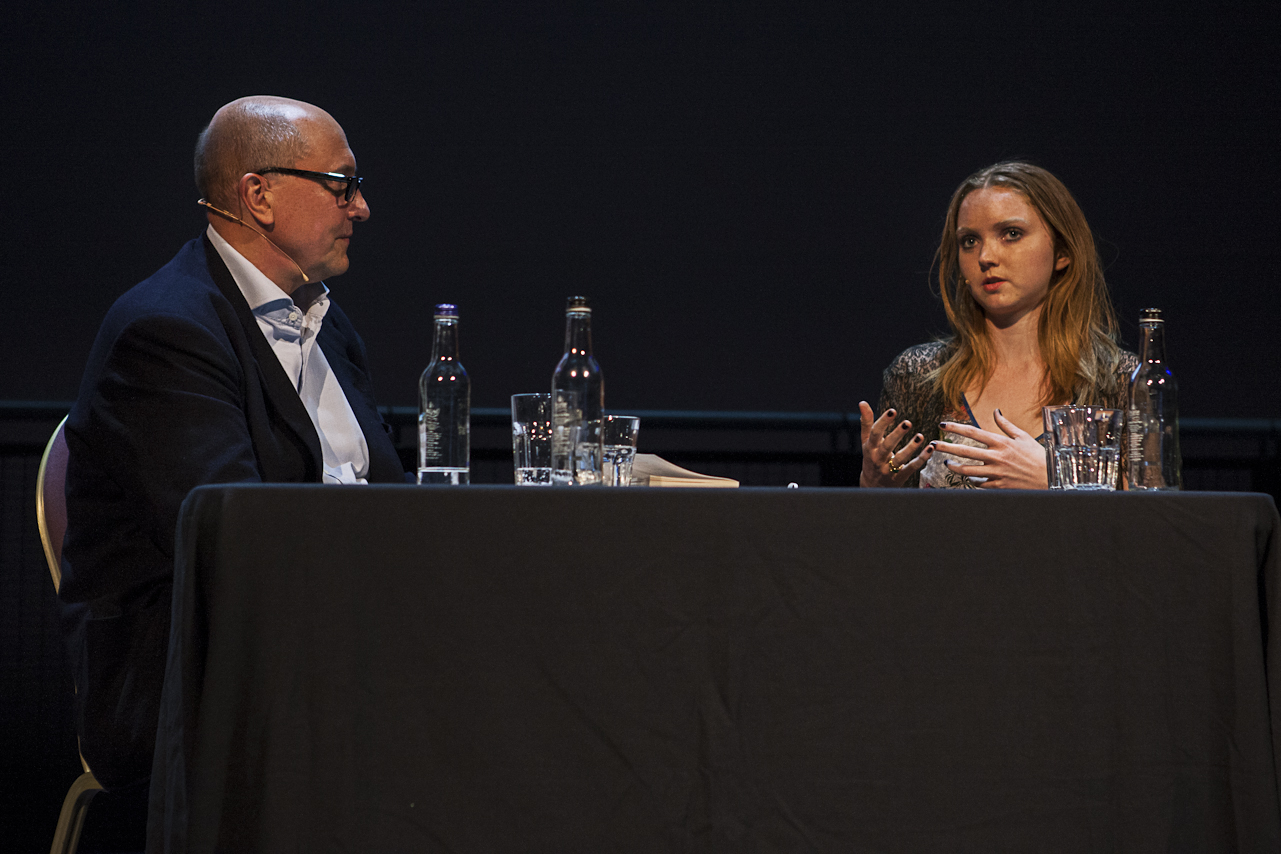My evening with the entrepreneurial Lily Cole, by Roger Highfield, Director of External Affairs
A little copse of ‘giving trees’ will once again sprout in the entrance to the museum’s Wellcome wing as part of our highly-successful Lates events.
The olive trees first appeared at our last adults-only evening to celebrate the work of the actor, activist and entrepreneur Lily Cole. That night Lily and I met in the museum to discuss her ‘gift culture’ social network Impossible.com, which is now being developed into an App.

The last time we encountered each other, we discussed her work with the World Land Trust to help elephant migration routes. This time around, and before a packed IMAX, Lily and I compared notes on the ideas behind her grander vision of cooperation, as seen in her website impossible.com, which is currently in beta.
She conceived the idea for her new sharing economy during the depths of the financial crisis and has followed through with admirable determination on her plans to create a moneyless system for exchanging goods and services. Or, as Lily put it: ‘What if technology could communicate people’s needs?’
Lily has consulted many people for her project, including Muhammad Yunus, who won the noble peace prize for micro finance. Indeed, one of her investors was so inspired by his first meeting with her that he started work on her app without any prompting.
At the core of Lily’s thesis lies her belief in the universal kindness between strangers, one that impossible.com taps into, which challenges our bartering economy through a currency of “thank-yous” instead of money.
While she approaches the question of cooperation from the perspective of her Cambridge University background in arts, anthropology and economics, I adopted that of my co-author Martin Nowak of Harvard University, who has done experiments to study the origins of cooperation, whether by studying idealised mathematical agents or people.

What Nowak has shown, with the help of a famous game theory experiment called the Prisoner’s Dilemma, is that evolution undermines cooperation without the help of mechanisms.
We know such mechanisms must exist because cooperation is so ubiquitous. Some of my examples from nature were familiar to the audience, such as leaf ants, bees who tirelessly harvest pollen for the good of the hive, and naked mole rats.
Because of the many parallels between these societies and multicellular creatures, where the job of reproduction is specialised, mole rate colonies, ant nests and beehives are known as superorganisms.
Some of my examples were downright odd, such as the ‘unicorn of the sea’, or pyrosome. These are composed of thousands of individuals, called zooids, which form hollow bioluminescent cylinders up to 20 m long and large enough for a scuba diver to swim inside.
Cooperation is ancient, dating back to the dawn of life on Earth, more than three billion years ago. Among filaments of cyanobacteria, for example, one dies every 10 or 20 to feed its neighbours with nitrogen. Other bacteria forage in groups, much as a pride of lions hunt together.
Slides from the Science of Cooperation discussion
Martin Nowak has identified five basic mechanisms of cooperation: direct reciprocity (I scratch your back, you scratch mine); indirect reciprocity (I scratch your back and someone else scratches mine); spatial selection (exploiting population structure, whether due to geography, friendship or common interests); multilevel selection (I will sacrifice myself for the greater good) ; and, finally, kin selection (we help our relatives – nepotism). People use all five – that’s why Martin and I call them supercooperators. Of that list of mechanisms, Lily’s impossible.com makes the most use of ‘indirect reciprocity,’ which is linked to the evolution of social intelligence and language.
Our views of cooperation overlap on one key point: that to prevent environmental catastrophe, we need to improve the way that we work together not just for our own good but also for the benefit of future generations: we need to do more to cooperate with the unborn, if you like.
After the event, Lily and I returned to the little copse where museum visitors had been encouraged to write their wishes on wooden boards, following the Shinto tradition, in the hope that at least one of the 4000 people who visited that night could make it come true.
Jimmy Wales, American Internet entrepreneur and a co-founder of Wikipedia had joined the milling crowd earlier that evening as they penned their wishes in Sharpie onto small wooden boards and hung them on the trees. Later we met Science Minister, David Willetts, who was there to meet the winners of the Medical Research Council’s Max Perutz prize, and Dr Penny Fidler and her colleagues from the Association of Science and Discovery Centres, who were attending their annual conference.
Lily has also been 3D scanned for a new museum exhibition 3D: Printing the Future (try to find the resulting mini Lily on the exhibition wall) and contributed to a mass experiment on music, #Hooked, organised by our sister museum, the Museum of Science and Industry in Manchester.
Our experience with Lily was, in its own way, a wonderful testament to the power of cooperation.
The next Science Museum Lates is space-themed and runs from 6:45-10pm on Wednesday 30th October.